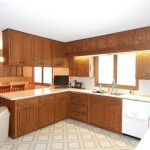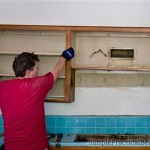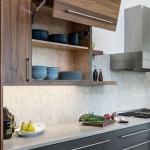Kitchen Cabinet Wall Mounting Brackets: A Comprehensive Guide
Installing kitchen cabinets can be a daunting task, but with the right tools and techniques, it can be a manageable project. One crucial element in cabinet installation is the use of wall mounting brackets. These brackets provide the necessary support to ensure that your cabinets remain securely attached to the wall, preventing them from sagging or falling. This article will delve into the various aspects of kitchen cabinet wall mounting brackets, covering their types, installation procedures, and factors to consider when choosing the right brackets for your project.
Types of Kitchen Cabinet Wall Mounting Brackets
Kitchen cabinet wall mounting brackets come in a wide array of designs, each suited for specific cabinet types and installation scenarios. Some of the most common types include:
- Z-Brackets: These brackets are named for their Z-shaped design and are typically used for base cabinets. They offer strong support and are easy to install. Z-brackets usually come in different lengths to accommodate various cabinet depths.
- L-Brackets: L-shaped brackets are commonly used for wall cabinets and offer excellent support for both vertical and horizontal loads. Their versatility makes them suitable for a wide range of installation needs.
- Concealed Brackets: These brackets are designed to be hidden behind the cabinet, providing a cleaner aesthetic. They are often used in conjunction with adjustable shelves or for heavier cabinets that require additional support.
- Heavy-Duty Brackets: As the name suggests, these brackets are built for strength and are suitable for large or heavy cabinets. They often feature reinforced metal construction and multiple attachment points for maximum stability.
Factors to Consider When Choosing Kitchen Cabinet Wall Mounting Brackets
Selecting the right wall mounting brackets for your kitchen cabinets requires careful consideration of several factors. Understanding these factors will help you choose brackets that offer the necessary support and functionality for your specific installation needs.
- Cabinet Weight and Size: The weight and size of your cabinets are crucial factors in determining the type and strength of brackets required. Heavier cabinets require sturdier brackets to prevent sagging or failure.
- Wall Material: The material of your walls also plays a significant role. Drywall requires different brackets than concrete or brick walls. Consult with a professional for recommendations if you are unsure about the strength of your walls.
- Aesthetic Preferences: While functionality is paramount, aesthetic considerations are also important. Concealed brackets offer a cleaner appearance, while exposed brackets can create a more industrial or contemporary look.
- Budget: The cost of brackets can vary significantly depending on their material, strength, and design. Set a budget and choose brackets that meet your requirements without breaking the bank.
Installing Kitchen Cabinet Wall Mounting Brackets
Installing kitchen cabinet wall mounting brackets involves a series of steps that ensure proper placement and secure attachment. Here is a general guide to the installation process:
- Determine Bracket Placement: Measure and mark the wall where the brackets will be installed, considering the height and position of your cabinets. Ensure that the brackets are positioned at the correct height and spacing for optimal support.
- Pre-Drill Holes: Before driving screws into the wall, pre-drill holes slightly smaller than the screw diameter to prevent damage to the drywall or other wall materials. This also makes driving the screws easier and more efficient.
- Attach Brackets to Wall: Use appropriate screws or anchors based on your wall material. Drive the screws securely into the pre-drilled holes to attach the brackets to the wall.
- Attach Cabinets to Brackets: Align the cabinet with the mounted brackets and attach them securely using screws or other fasteners. Ensure that the cabinet is level and sits flush against the wall before tightening screws.
- Check Stability: Once the cabinets are installed, test their stability by gently pushing or pulling on them. If they feel secure and do not wobble or move, you have successfully installed your kitchen cabinets.
For projects involving delicate cabinets or complex installations, seeking professional help is recommended. Experienced contractors will have the expertise and specialized tools to handle challenging installations and ensure the longevity of your kitchen cabinets.

Hanging Bracket Wall Hanger Plate 63mm Kitchen Cabinet Cupboard Mounting Overhead 150kg Load Capacity Fixing King

Kitchen Cabinet Wall Mounting Brackets Jet Press

Hafele Nylon Cabinet Bracket Plate Toolstation

Goodhome White Wall Hanging Bracket Kit W 175mm Diy At B Q

Wall Unit Fitting Adjustments Diy Kitchens Advice

Wickes Cabinet Hanging Bracket And Plate 59 X 50mm 10 Pack Co

X10 Kitchen Wall Cabinet Hanger Mounting Plastic 29000740

Hanging Bracket Wall Hanger Plate 63mm Kitchen Cabinet Cupboard Mounting Overhead 150kg Load Capacity Fixing King

Hanging Bracket Kitchen Cabinet Wall Plate Support Unites Cupboard Heavy Duty

X2 Koala Cabinet Hangers Spider Concealed Dowels Mounting 29036910
Related Posts








